 Our World
Our World  Our World
Our World  Miscellaneous
Miscellaneous 10 Intriguing Origins of Popular Carnival Rides
 Weird Stuff
Weird Stuff Ten Unexpected Discoveries Involving Vomit
 Movies and TV
Movies and TV 10 Actors Who Almost Didn’t Take Career-Defining Roles
 Technology
Technology 10 Little-Known Shifts in Computer Science
 Religion
Religion 10 Catholic Histories That Reveal Acceptance of Abortion and Contraception
 Politics
Politics 10 Lesser-Known “First and Only” Facts about U.S. Presidents
 Miscellaneous
Miscellaneous 10 Things You May Not Know about the Fourth of July
 History
History 10 Shocking and Gruesome Founding Father Facts They Don’t Teach in School
 Crime
Crime The Ten Most Vicious Los Angeles Killers
 Our World
Our World 10 Surprising Secrets of Notre Dame Cathedral
 Miscellaneous
Miscellaneous 10 Intriguing Origins of Popular Carnival Rides
 Weird Stuff
Weird Stuff Ten Unexpected Discoveries Involving Vomit
Who's Behind Listverse?

Jamie Frater
Head Editor
Jamie founded Listverse due to an insatiable desire to share fascinating, obscure, and bizarre facts. He has been a guest speaker on numerous national radio and television stations and is a five time published author.
More About Us Movies and TV
Movies and TV 10 Actors Who Almost Didn’t Take Career-Defining Roles
 Technology
Technology 10 Little-Known Shifts in Computer Science
 Religion
Religion 10 Catholic Histories That Reveal Acceptance of Abortion and Contraception
 Politics
Politics 10 Lesser-Known “First and Only” Facts about U.S. Presidents
 Miscellaneous
Miscellaneous 10 Things You May Not Know about the Fourth of July
 History
History 10 Shocking and Gruesome Founding Father Facts They Don’t Teach in School
 Crime
Crime The Ten Most Vicious Los Angeles Killers
Top 10 Astronomy Photos That Made History
Aside from the telescope, the most important invention for the field of astronomy was the camera. With a camera, astronomers no longer had to rely on the flimsy observations they scribbled in their notebooks. Instead, they could spend weeks analyzing a single frame and pulling out all its details.
Since then, astronomers have captured some of the universe’s most incredible objects and phenomena in their lenses. Some astronomy photos have even gone down in history.
10 Amazing Astronomical Events Caught On Camera
10 The Birth Of A Solar System
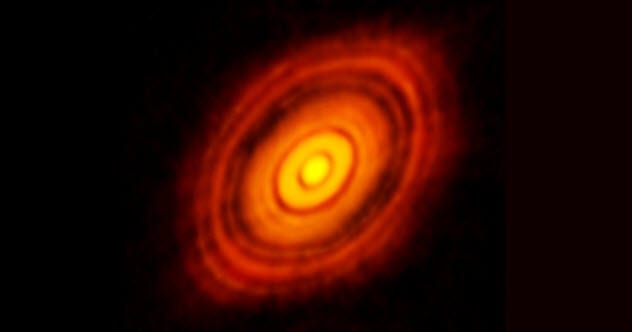
Previously, the process that forms planets was only known through mathematical models and computer simulations. Then, in 2014, astronomers were able to photograph the process in greater detail than ever before.
The photo showcases a protoplanetary disk, which encircles a newborn star—in this case, HL Tauri—after the star’s leftover material settles. You might notice discrete rings throughout the disk. Those are the orbits of soon-to-be planets.
The most amazing thing?
This system is forming planets, and HL Tauri is no more than one million years old! Due to this photo, astronomers now believe that planets form almost immediately after the birth of their star.[1]
9 Supernova 1987A

When the most massive stars in the universe die, they explode. The explosion is called a supernova, and it can be seen from millions or billions of light-years away. Unfortunately, before 1987, we only saw supernovae from those distances, so the information we gathered on them was very limited.
Then, on a cold winter night in ’87, various observers saw the light from a blue supergiant that had gone supernova in the Large Magellanic Cloud, a satellite galaxy of the Milky Way, just 166,000 light-years away. SN 1987A, as it was dubbed, was the closest supernova to Earth since Kepler’s Supernova in 1604. Therefore, it was a rare opportunity to study the explosive death of a star in detail.
Most of what we know about supernovae today comes from SN 1987A. Astronomers learned all the steps that lead to such an explosion, got irrefutable proof that these explosions create the elements necessary for life on Earth, and were even able to detect the neutrinos (particles similar to electrons but far more elusive) created in the explosion.[2]
8 Cracks In Europa
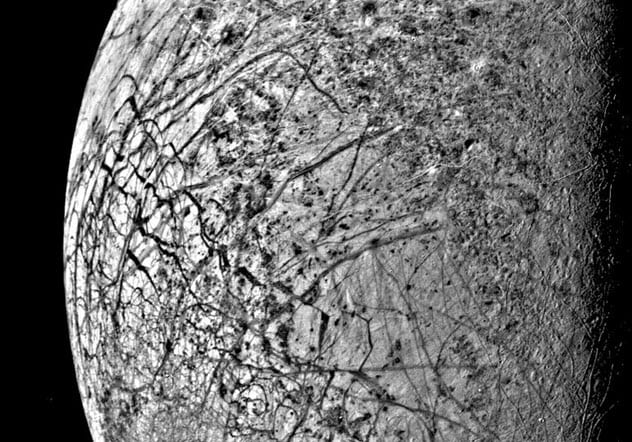
On July 9, 1979, NASA’s Voyager 2 probe flew by Jupiter and revealed the first high-resolution images of Europa, one of the planet’s moons. Due to its low density, scientists knew that Europa had a significant amount of water. However, its distance from the Sun (5.2 times as far as Earth) made many scientists believe that all of Europa’s water was frozen.
Accordingly, shock waves traveled through the scientific community when Voyager 2 sent back a photo of Europa’s surface showing that it was covered with dozens of prominent dark streaks. A topographical map of Europa identified these streaks as massive cracks in the ice.
Similar features are found in Earth’s ice sheets when a liquid ocean underneath the ice pulls it apart, causing water to rush between the cracks and freeze over. Scientists now believe that a several-mile-deep liquid water ocean exists beneath Europa’s surface. What could be swimming there?[3]
7 Stars Orbiting A Supermassive Black Hole
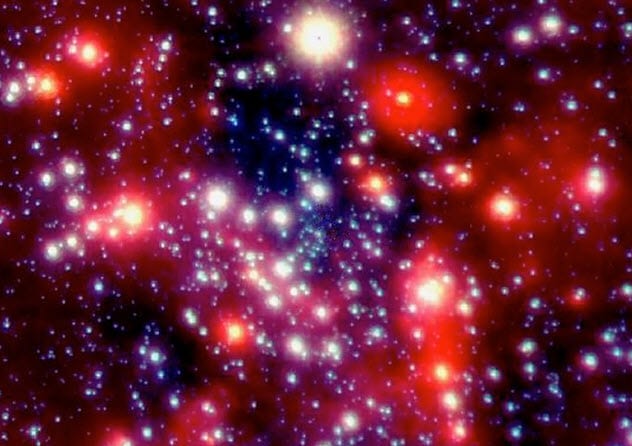
Sagittarius A* is a mysterious radio source in the center of our Milky Way. It has long been hypothesized that Sagittarius A* is an extreme breed of black hole—a supermassive black hole.
We usually think of black holes as those left behind when the biggest stars go supernova. They are about as massive as 10 Suns. However, supermassive black holes are millions (and sometimes billions) of times the mass of the Sun.
In 2002, the existence of supermassive black holes was essentially confirmed when a team of international astronomers took an incredible photo of a star in orbit around Sagittarius A*. It’s an eerie image. The star looks like it’s orbiting an empty patch of space, but it’s being whipped around at 5,000 kilometers (3,100 mi) per second.
Mapping this star’s orbit allowed scientists to probe the gravitational field of Sagittarius A*, giving nearly conclusive evidence that a supermassive black hole is the only thing it could be. This photo implicitly confirms that the mysterious mass concentrations that appear in the centers of other galaxies are also supermassive black holes.[4]
6 The Hubble Deep Field
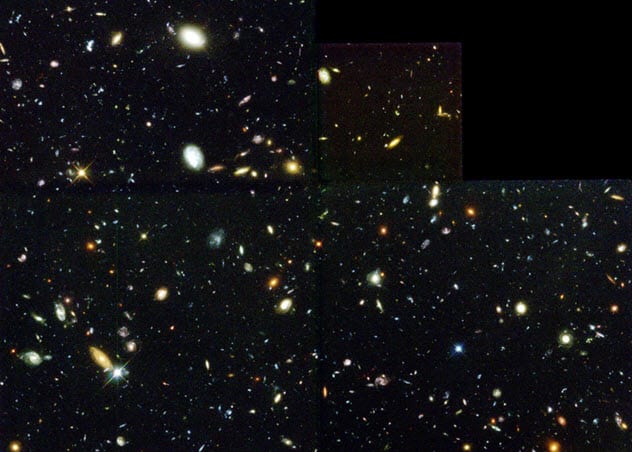
The Hubble Space Telescope is one of the busiest telescopes in the world. For that reason, it was quite a surprise when scientists decided to point the telescope at a completely empty patch of space for 10 consecutive days in 1995. Amazingly, the image that turned up was not empty at all.
It contained almost 3,000 galaxies, all of which were too faint to have been picked up earlier. Almost every point of light you see in the image is a galaxy. Some of them are so far away that we’re looking at them 10 billion years in the past and glimpsing the first stages of their formations.[5]
Furthermore, as closer galaxies also appear in the image, we’re essentially looking at a timeline of the universe. The Hubble Deep Field, as the photo was named, is a tiny portion of the sky. (It’s about 1/30th the size of the full Moon). Therefore, the sheer number of galaxies contained within it hints at how vast our universe is.
10 Incredible Images from the Hubble Telescope
5 The Bullet Cluster
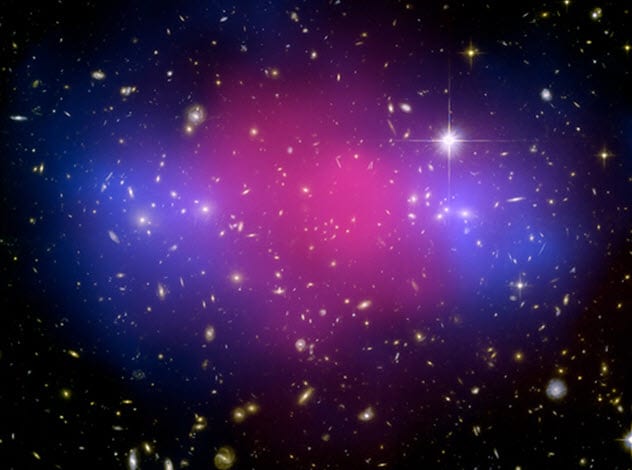
Whenever astronomers look at a galaxy, it always has a stronger gravitational pull than justified by the stars and gas within the galaxy. This discrepancy is one of the greatest mysteries in astrophysics. But it could be solved by the existence of dark matter.
Dark matter is a hypothetical particle that does not interact with light whatsoever, though many believe that it comprises the majority of the matter in the universe. Whether dark matter exists is still up for debate, but a famous photo taken in 2006 provides serious evidence in favor of the idea.
It’s a photo called the Bullet Cluster, and it captures two galaxy clusters in mid-collision. The collision created a unique setup where the stars are separated from the gas and dust.
As gas and dust make up the majority of the mass in a galaxy, they should exhibit the strongest gravitational pull. Yet the gravity is focused around the stars, which implies that there is still an invisible heavyweight in the universe.[6]
4 A Direct Photo Of A Black Hole
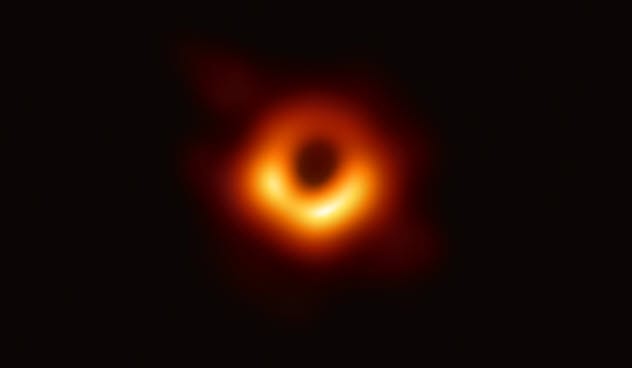
A photo of a black hole sounds impossible. After all, by definition, black holes emit zero light. However, the gas falling into a black hole does emit light. Einstein’s theory of general relativity predicts that a black hole will create a “shadow” or “silhouette” among the glowing gas, and that is possible to photograph.
As this target is incredibly dim, the endeavor theoretically requires a telescope the size of the Earth. Amazingly, that’s exactly what scientists from the Event Horizon Telescope did.
They synchronized eight telescopes around the world to mimic one giant telescope with a diameter equal to the distance between the telescopes. After painstaking data processing, the resulting photo immediately made history.
The picture shows a supermassive black hole, 6.5 billion times the mass of the Sun, sitting at the heart of its galaxy, M87, about 55 million light-years away from Earth. The event horizon (the black hole’s boundary) also presented itself exactly as Einstein’s theory predicted, confirming the theory like never before.[7]
3 The Cosmic Microwave Background
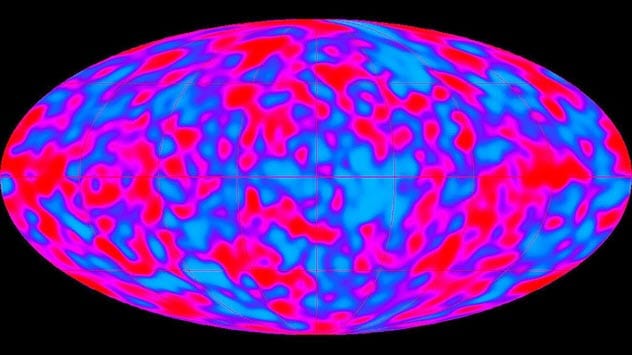
Just 380,000 years after the big bang, the temperature and density of the universe had dropped enough for the first photons (particles of light) to be sent zooming through space. As the universe expanded, these photons were stretched to larger wavelengths. Today, we observe them as microwaves, so we call them the Cosmic Microwave Background (CMB).
The CMB was discovered in 1965. But it was only in 1989 that a satellite was launched to make detailed measurements as well as a panoramic map of the CMB. Although more detailed maps were created in the following years, it was the initial map that first enchanted the world. Not only did it capture the imprint of the big bang but it also formally verified the big bang theory.[8]
2 The VAR! Plate
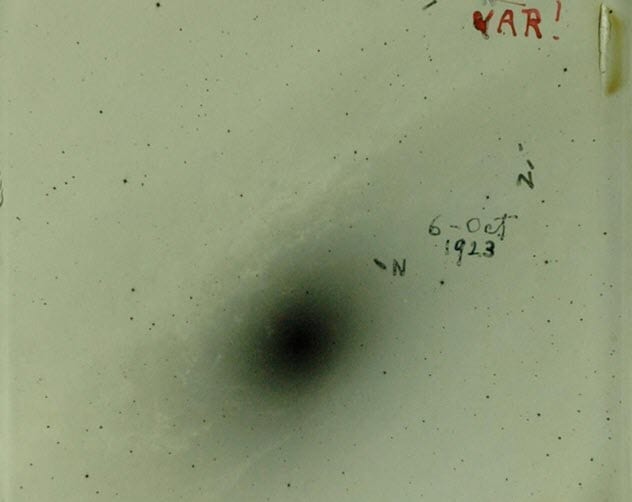
Before 1923, we weren’t sure if the Milky Way was the entire universe or if other galaxies existed. Astronomers had seen other galaxies but only as unresolvable “fuzzy” patches that they chalked up to be nebulae.
One of those objects was the Andromeda galaxy. In October 1923, the famous astronomer Edwin Hubble was focusing on Andromeda with the world’s biggest telescope at the time. He photographed the galaxy on a glass plate (the way astronomy photos were taken back then).
After careful analysis, he noticed that one star had changed its brightness from previous nights of observation. Those are called variable stars, and this specific type can be used to determine distance. Excited by this find, Hubble wrote “VAR!” (meaning “variable”) on the plate.
He calculated the distance to Andromeda and found that it is far out of range of the Milky Way. Just like that, the universe expanded tremendously. We now estimate that 100 billion galaxies are in the observable universe.[9]
1 The 1919 Solar Eclipse
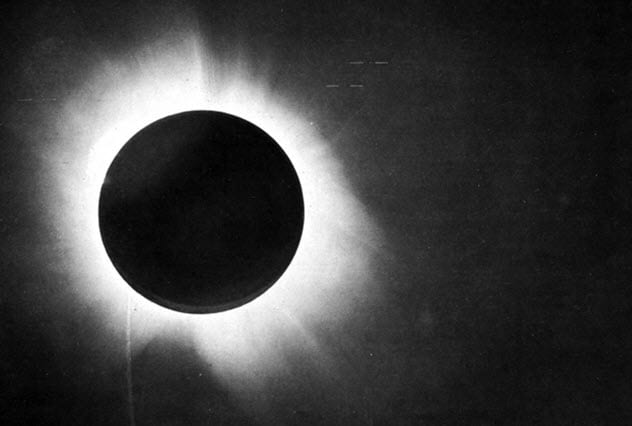
Can gravity bend light?
It’s a radical idea, but a young Albert Einstein was certain of it. Einstein’s theory of general relativity didn’t just start a revolution in astronomy, it changed the entire field of physics forever. Although Newton was able to describe the effects of gravity, Einstein essentially answered the question, “Why does gravity happen?”
According to his idea, space is like a trampoline. If you put a heavy object (like the Sun) on it, space will bend. Other objects, like the Earth, then orbit because they are just following the natural curvature of space.
As incredible as the theory is on paper, the scientific community needed proof, of course. According to Einstein, if you could prove that the Sun’s gravity was warping the light from stars behind the Sun, his theory would be verified. However, such an experiment could only be done during a solar eclipse so that the intense rays of the Sun wouldn’t obscure the stars.
In May 1919, three years after the publication of the theory of general relativity, a total solar eclipse occurred. Under the instruction of Einstein, famous astronomer Arthur Eddington took a photo of the eclipse and marked the location of the stars behind it.
However, the stars weren’t where they were supposed to be, indicating that their light was being bent. Einstein became a celebrity overnight, and the photo was immortalized in history.[10]
10 Historical First Images Captured Of Space
About The Author: I am an amateur astronomer, astrophotographer, and tutor based out of Long Island. Check out my astrophotography instagram @universe_selfies.
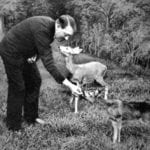



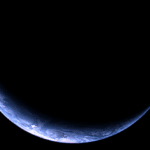
![10 Creepiest Photos Of Victims Taken By Serial Killers [DISTURBING] 10 Creepiest Photos Of Victims Taken By Serial Killers [DISTURBING]](https://listverse.com/wp-content/uploads/2018/09/Regina-Kay-Walters-featured-2-150x150.jpg)


